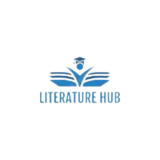How to Read Literature Like a Professor by Thomas C. Foster
This book goes into the inner minds of professors and explains how they carry out anatomy on Literature and gives deeper meanings to the terms and devices used in Literature.
Reading this book takes the readers through important aspects in Literature and enhances a better understanding of the literary terms and devices.
Foster explains that the book is written for adult learners and non-traditional college students who are new entrants into literary analysis.
The author explains how professors approach Literature by identifying the reservations most students have about the professional ways of reading and approaching Literature.
It might appear to these new entrants into literary appreciation that the professor is performing magic the way they read Literature when in actual fact he is just mastering “the language of reading.”
This includes mastering a set of tools that directs scholars to approach Literature on a complex and deeper level. The three major elements of language are identified; memory, symbol, and pattern.
Foster reads meaning to everything that happens in a work of Literature. He says that every journey in a work of Literature can be seen as a quest.
Also, every time characters gather together to eat is a communion. This does not refer to the Christians’ traditional meaning of communion.
Vampires, which are a major phenomenon in Literature, are not used to create fear and scare the readers. Vampires in Literature take different dimensions.
Stories on Vampires are usually stories about sexualities. The vampire figure in the narrative may symbolize a sexual predator running after a vulnerable victim who might be a virgin.
According to Foster, no Literature work is completely original. Plots, themes, characters and symbols are inter-connected.
For example, William Shakespeare’s works have had a lot of influence on subsequent writers as well as the English language generally. Several allusions are drawn from his writings.
References are also made to the Bible by different authors of literary works. Non-religious texts may draw different Biblical allusions, symbolism and imagery to learn credence to the writings.
Greek myths and fairy tales also have a great influence on Literature. These genres form part of our imagination directly and indirectly.
In the concluding part of the book, Foster surmises that one might find it difficult to have confidence in one’s interpretation of a literary text. He says that readers should rather believe in themselves and value their analysis of literary works.
Messages in How to Read Literature Like a Professor
Some of the identified messages in the book are as follows:
Literary Interconnectivity: Foster is of the opinion that no Literature can be written in isolation. References are made by the authors to the works of their predecessors hence, building on their works.
Different allusions are drawn from Shakespeare’s work. Allusions are also drawn from the Bible by authors of non-religious Literature works.
The Use of Archetypes: Foster explains that archetypes like the hero and villain are used in Literature in order to help readers understand the deeper meanings of a literary work and appreciate it more.
The Use of Literary Techniques: Foster is of the opinion that literary techniques like flashbacks, foreshadowing, and repetition are necessary in Literature as they help in understanding the author’s messages.
The Importance of Literary Context: Foster stresses that the context, whether historical or cultural, in which a literary work is written is very important. This would aid a better understanding of the text.
Literature as a Conversation: Foster believes that Literature is a conversation between the authors and the readers. He says further that the readers only need to understand the codes and conventions of Literature.
This would afford them the ability to read meanings to the messages being passed across by the author and participate in the conversation.
In conclusion, the overall message of How to Read Literature Like a Professor stresses the need to read Literature intensively and extensively.
The readers should study it critically and understand the literal and literary meanings of the text. They should also endeavor to extract the embedded themes and the interpretation of the Literature work being studied.
